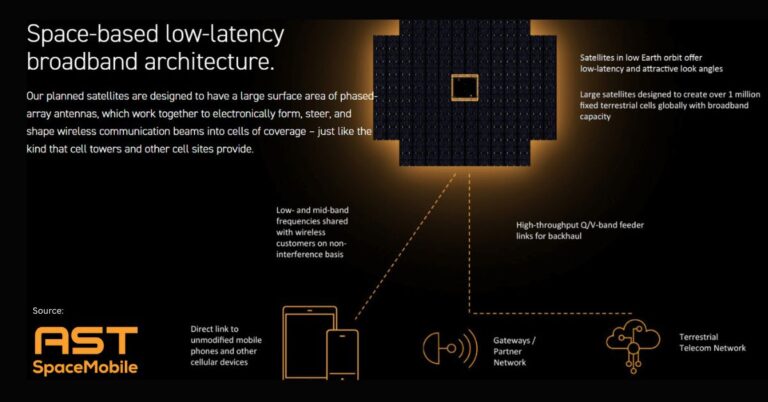Upper 6 GHz (n104) validated for macro-capacity 5G-Advanced in Europe
A new pilot in Spain shows that the upper 6 GHz band can deliver 5G-class coverage with far higher capacity, positioning it as a prime spectrum option for 5G-Advanced and 6G.
Why upper 6 GHz (n104) matters now
The 6.425–7.125 GHz range (3GPP Band n104) is the last sizable mid-band window that is not tied to legacy mobile use in Europe. It offers wide contiguous channels for multi-gigabit throughput while remaining low enough in frequency to sustain macro-layer coverage with advanced antennas. For operators running out of headroom in 3.5 GHz, n104 is the pragmatic path to scale traffic without a dense small-cell rebuild.
Coverage parity, capacity gains and macro site reuse
The trial found that with higher-order massive MIMO and active antennas, the upper 6 GHz layer can match the practical coverage of 3.5 GHz from existing macro sites. Beamforming and spatial multiplexing offset higher path loss, enabling large capacity gains without wholesale changes to the site grid. This is critical for total cost of ownership, time-to-market and energy efficiency.
Built for 5G-Advanced and early 6G services
Wide channels in n104 align with the needs of immersive communications, industrial digital twins and low-latency interactive applications. The band’s bandwidth supports heavy downlink loads and, with 5G-Advanced uplink enhancements, demanding uplink streams for video, sensing and holographic use cases.
Inside the Telefónica–Nokia–UPV upper 6 GHz pilot
The partners ran a live proof-of-concept on UPV’s campus to test performance, coverage and deployment feasibility using state-of-the-art radio equipment.
Trial location and methodology
The team executed the pilot in the 5G holographic lab at the Universitat Politècnica de València, a European reference environment for advanced connectivity research. The facility—co-developed by Telefónica, Nokia and UPV’s iTEAM—hosts end-to-end experiments for 5G-Advanced and early 6G use cases, including extended reality and holographic communications.
n104 hardware, MIMO and spectrum setup
The setup used Nokia active antennas with higher-order massive MIMO operating in 3GPP Band n104. These arrays concentrate energy with precise beams and serve many users simultaneously. The objective was to validate whether the upper 6 GHz layer could leverage the existing macro footprint, rather than depend on dense infill.
Results: 3.5 GHz-like coverage with higher capacity
Measurements indicated coverage on par with 3.5 GHz when using advanced beamforming, while delivering much higher traffic density. The trial confirmed that operators can repurpose current base station locations, drive spectral efficiency, and achieve performance suitable for next-generation services. In short, n104 can be deployed efficiently for capacity scaling without sacrificing reach.
Strategic implications for operators, vendors and RAN roadmaps
The findings point to a clear path to capacity growth and 6G-readiness that aligns with existing radio sites and RAN investment cycles.
Deployment economics, timelines and modernization
Being able to reuse macro sites reduces civil works, permitting and backhaul upgrades. Operators can phase in n104 radios as part of 5G-Advanced modernization, then evolve to 6G software and features later. This lowers risk versus high-band millimeter wave, while delivering material capacity increases in urban and suburban areas.
RAN requirements: higher-order MIMO, beam management, energy
Success hinges on higher-order massive MIMO, efficient beam management and power optimization. Vendors will need to balance array size, weight and energy use, while delivering digital beamforming, advanced channel state reporting and AI-driven optimization. Coordinated multipoint and uplink enhancements in 5G-Advanced will matter for uplink-heavy applications.
Device and ecosystem readiness for n104
Handset and module support for Band n104 will be pivotal. Chipset roadmaps tied to 3GPP Release 18 and beyond should clarify availability windows. Early adoption will likely focus on fixed wireless access, enterprise CPE and industrial devices before mass-market smartphones scale. Vendors that accelerate RF front-end and filter support will gain share.
Europe: policy, regulation and coexistence for upper 6 GHz
Upper 6 GHz is in active regulatory consideration across Europe, with coexistence and harmonization decisions shaping timelines.
Key European decisions and harmonization
Post-WRC deliberations in Europe are assessing the role of 6.425–7.125 GHz for mobile. Major operators advocate for harmonized IMT use to secure mid-band capacity for 5G-Advanced and 6G. A clear regional framework would unlock device scale, roaming simplicity and cross-border planning.
Incumbents and interference/coexistence management
The upper 6 GHz range hosts incumbent services in several markets, including fixed links and satellite-related uses. Coexistence will require careful coordination, technical conditions such as power and emission masks, and, where needed, geographic protections. The lower 6 GHz segment remains focused on Wi‑Fi, reinforcing the need for well-defined rules to avoid adjacent-channel issues.
Why live pilots inform regulation and investment
Live trials like the UPV project provide real-world propagation, interference and deployment data that feed CEPT and national studies. They reduce uncertainty on site reuse, beamforming gains and energy impact, strengthening the case for harmonized licensing and investment.
What enterprises and public sector should do now
Organizations planning advanced wireless should align spectrum, devices and applications with an eye on n104 availability.
Plan private/campus 6 GHz deployments
Track national licensing models for upper 6 GHz, including potential local or shared access. Early opportunities may appear in controlled environments such as campuses, ports and factories using operator-partnered or neutral-host models. Ensure fiber and power are ready for higher-order MIMO radios.
Prioritize immersive and uplink-intensive workloads
Extended reality, telepresence, holography and machine vision benefit from wide channels and robust uplink. Combine 5G-Advanced features with edge compute and QoS slicing to meet latency and reliability targets. Use the lab-to-field pathway the UPV facility exemplifies: validate applications in controlled testbeds before scaling.
Procurement checklist for n104-ready solutions
Ask vendors for Band n104 roadmaps, antenna configurations, power profiles and thermal limits. Require support for Release 18 features that improve uplink and mobility. Confirm device plans for CPE, industrial modules and, later, smartphones. Align security and observability stacks with expected traffic surges.
Spain’s role and European collaboration on 6 GHz
The pilot underscores Spain’s contribution to 6G research and the value of industry–academia partnerships for technology validation.
Collaborative R&D momentum at UPV
The 5G holographic lab at UPV is emerging as a European testbed for immersive applications and advanced radio techniques. The effort ties into the IMAGINE-B5G project under the Smart Networks and Services program, bringing academic, vendor and operator insights into a shared pipeline for pre-standard validation.
From proof of concept to scaled deployment
The path forward includes broader field trials, device ecosystem enablement and regulatory milestones. With evidence that upper 6 GHz can ride the existing macro grid, Spain and Europe have a credible route to higher-capacity mobile without prohibitive densification. The remaining tasks are harmonization, ecosystem readiness and disciplined execution.
Key takeaways on upper 6 GHz (n104)
The upper 6 GHz band (3GPP n104) is a viable macro-capacity layer that can match 3.5 GHz coverage when paired with higher-order massive MIMO.
Telefónica, Nokia and UPV have demonstrated performance that supports next-generation services while reusing existing sites, improving the deployment economics for 5G-Advanced and 6G.
European regulatory clarity, device support and refined coexistence rules are the next critical catalysts for scale.
Enterprises should prepare for n104-enabled services by aligning spectrum strategies, device plans and application roadmaps—starting with high-bandwidth, low-latency, and uplink-intensive workloads.









































